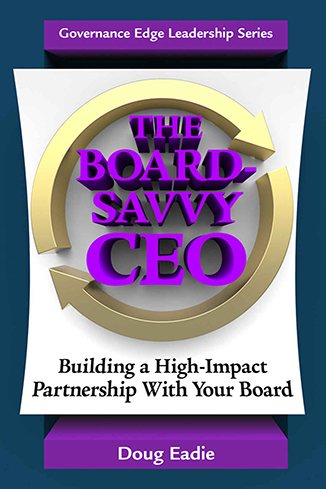I chatted with the CEO of a large nonprofit corporation a week ago, who was pleased to inform me that she had succeeded in getting her board to downsize itself to a governing body of, if I recall correctly, only 9 or 10 members. The rationale for shrinking her board consisted of two highly dubious assumptions: first, that larger boards are unwieldy, inefficient governing bodies; and second, that an acceptable level of governing efficiency can only be achieved through a smaller, more “nimble” board. To be honest, I’ve come to detest the word “nimble,” I’ve heard it used so often these days as a rationale for small, un-diverse boards.
I kept my peace as this CEO and I talked. Why get into a debate over a done deal? But I was – and am – convinced that downsizing her board in today’s world was a major step in the wrong direction – toward less diversity and, inevitably, less effective strategic decision-making. Making decisions faster might mean greater governing efficiency, but bringing less brainpower, expertise, and experience to the table cannot possibly be a recipe for greater governing effectiveness. Indeed, diversity is the most precious asset in governing in a fast-changing environment.
To take an example of board diversity in action, a couple of months ago I was privileged to facilitate a really exciting and ultimately highly productive “strategic work session,” involving the board, CEO and senior executives of a state trade association. The 25-member board was highly diverse, covering a wide range of experience, expertise, knowledge and connections with members and the wider world. Over the course of our 1 ½ days together, breakout groups assessed the association’s strengths and weaknesses and brainstormed issues in the form of growth opportunities and barriers standing in the way of growth, and in plenary session participants came up with a list of tentative growth initiatives to be explored after the session in a series of staff follow-through meetings. The session was a vivid demonstration of the power, strategically speaking, of a diverse board in today’s rapidly changing, ever more complex world. If we had assembled a significantly smaller, less diverse group of board members (say, 10 or fewer), the session would almost certainly have been less productive in terms of the content generated, no matter how intense the deliberations or well-prepared the staff briefings. This experience and many others have taught me that in a world as dynamic as ours, leadership diversity is a truly precious asset in making the kind of strategic judgments and decisions that drive organizational effectiveness and growth.
Getting back to the question of governing efficiency, I have seen many boards with 25 or more members make really important governing decisions and judgments in a timely fashion by using well-designed board standing committees and well-defined processes for board member engagement. And you don’t want to forget a very important – but perhaps less inspiring – benefit of larger, more diverse boards: greater CEO job security, for two very practical reasons. First, a larger board is far less apt to be taken over by a board faction dedicated to the CEO’s demise. Second, a larger board provides the CEO with more opportunities to cultivate alliances with key stakeholders on the board, most notably standing committee chairs.
Be on the lookout for a podcast on this subject that will be posted on this blog next week. The co-presenters are two truly board-savvy CEOs who have had tremendous success working with their highly diverse boards to grow their organizations: Jeff Finkle of the International Economic Development Council (with a board of around 50 members) and Virginia Jacko of the Miami Lighthouse for the Blind (with a board of approximately 30 members).
I’d love for you to weigh in on the relationship of board size to governing effectiveness, so have at it!





